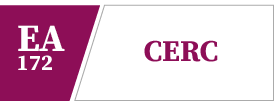Linguam in obscura compositione latitare
Résumé
In early modern medicine, the tongue remained an unyielding object of inquiry. Early modern physicians readily acknowledged the difficulty of describing and depicting the organ of taste from a medical point of view. Yet, this organ had already been represented in different ways: drawings in the margins of manuscripts and incunabula, anatomical xylographs and reproductions of microscopic details in works of early moderns iatromechanists. This work aims to examine the relationship these forms of visualization have had with scientific research and the epistemic keys they brought to the medical and anatomical investigations of this organ.
Décrire l'organe du goût d'un point de vue médical est d'une complexité que les médecins n'ont aucune difficulté à admettre. Pourtant, l'organe du goût a bien été représenté sous des formes diverses : du dessin à la main en marge de manuscrits et d'incunabules, à la xylographie des anatomistes, jusqu'à la reproduction du détail microscopique chez les iatromécaniciens du XVIIe e siècle. Notre travail se propose d'interroger les relations que ces formes de visualisation ont entretenues avec la recherche scientifique et les clés épistémiques qu'elles ont apportées à l'enquête médicale et anatomique autour de cet organe.
Fichier principal
 MASELLI_Linguam in obscura compositione latitare (2023).pdf (4.78 Mo)
Télécharger le fichier
MASELLI_Linguam in obscura compositione latitare (2023).pdf (4.78 Mo)
Télécharger le fichier
| Origine | Fichiers produits par l'(les) auteur(s) |
|---|---|
| licence |




